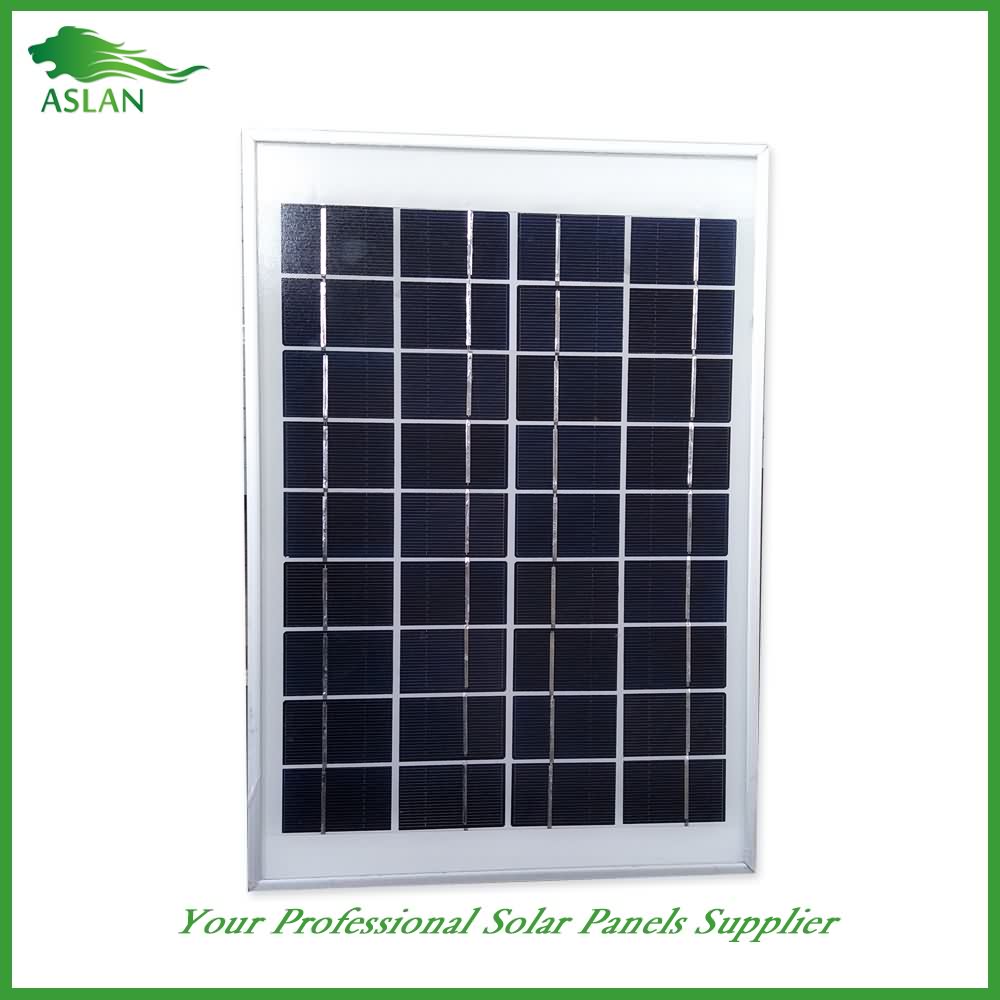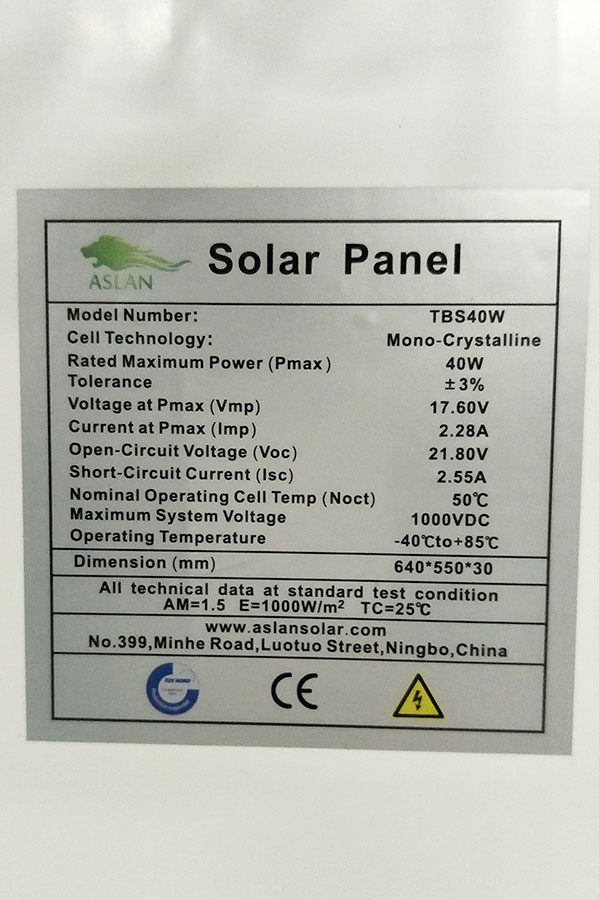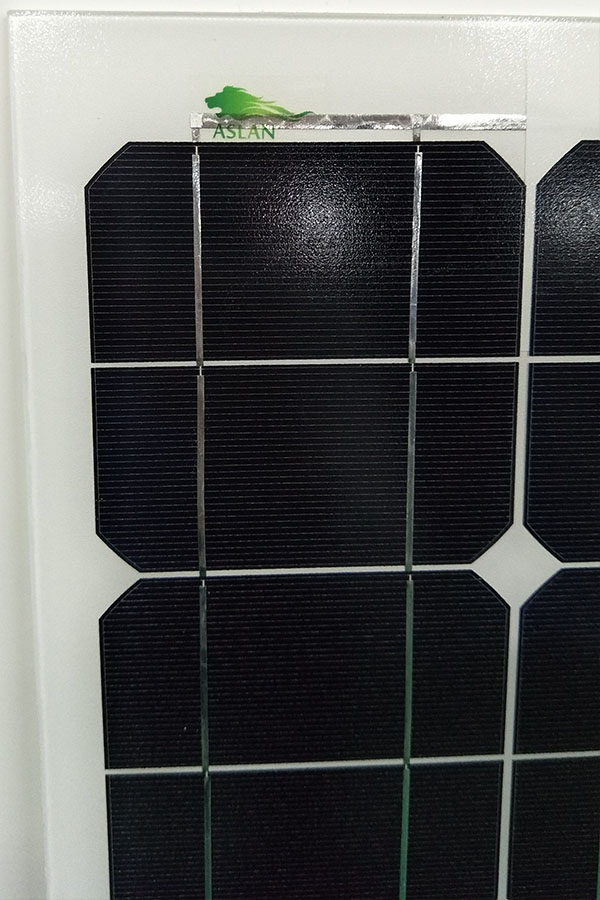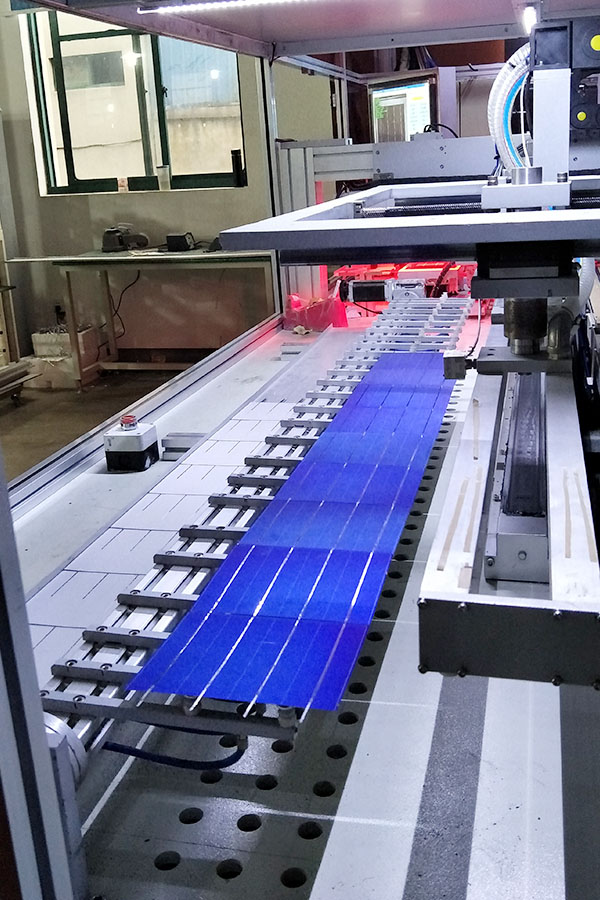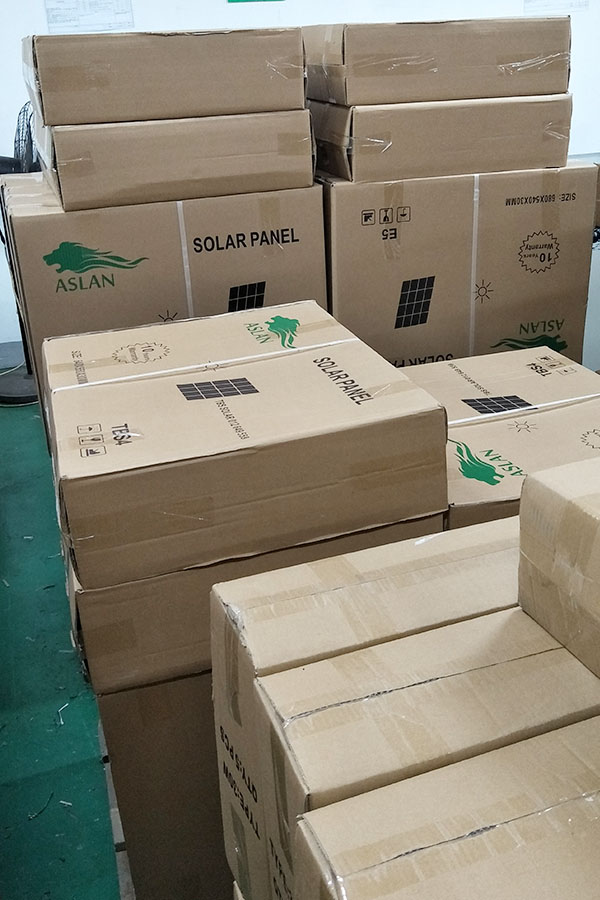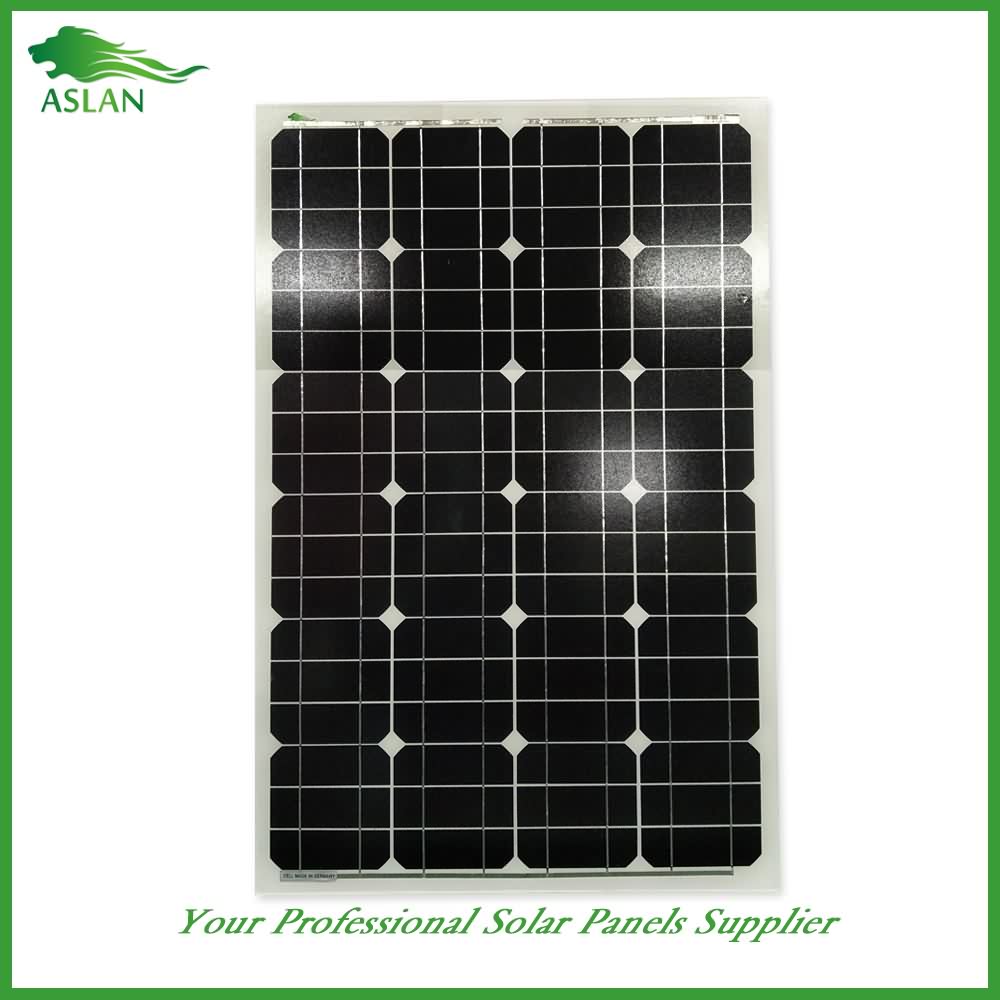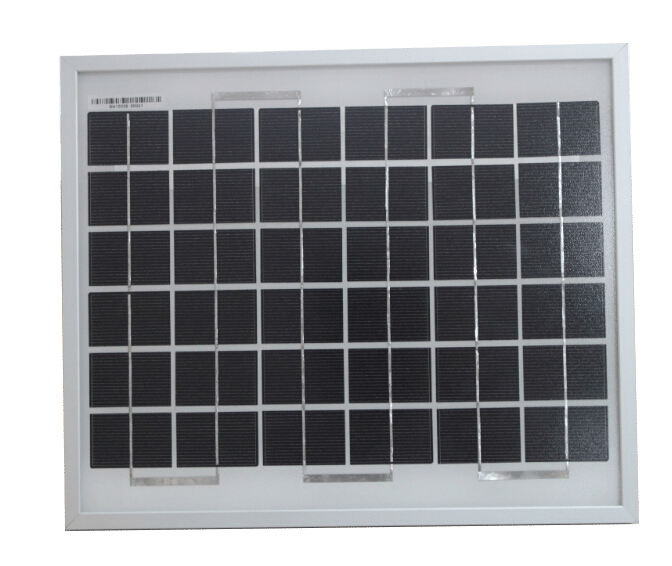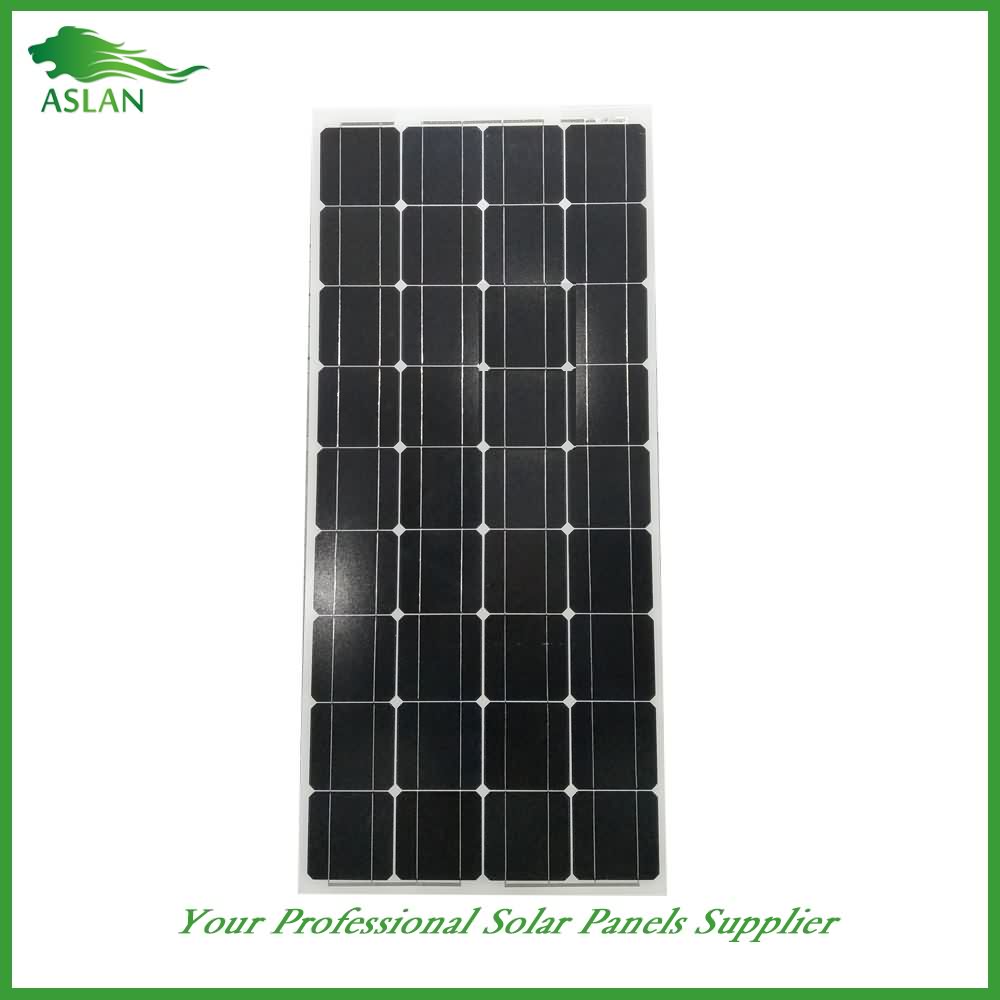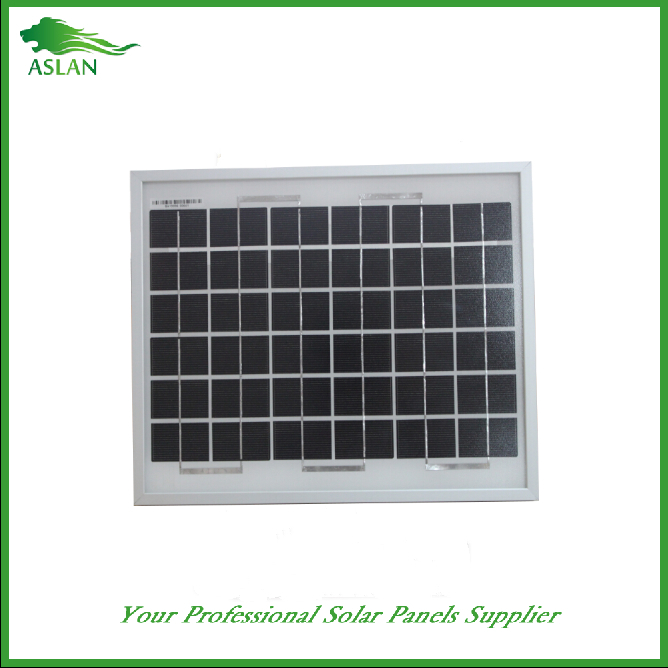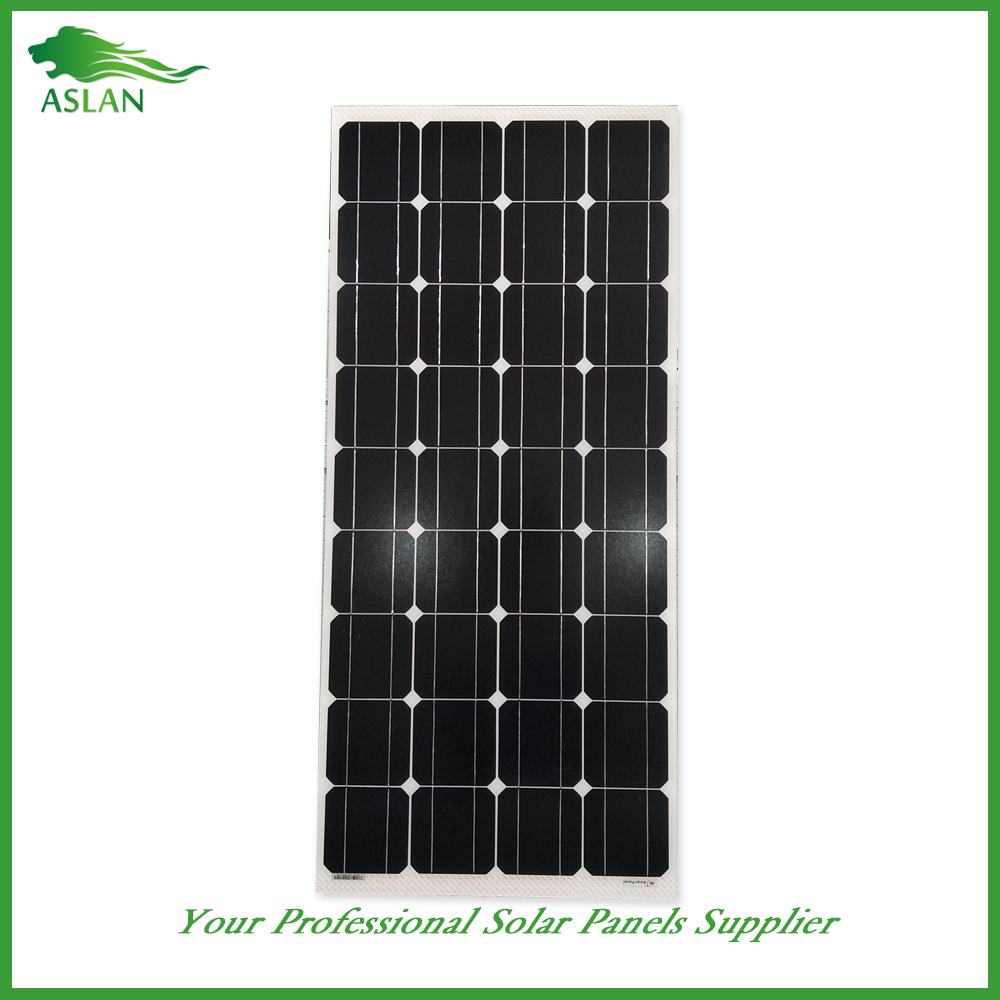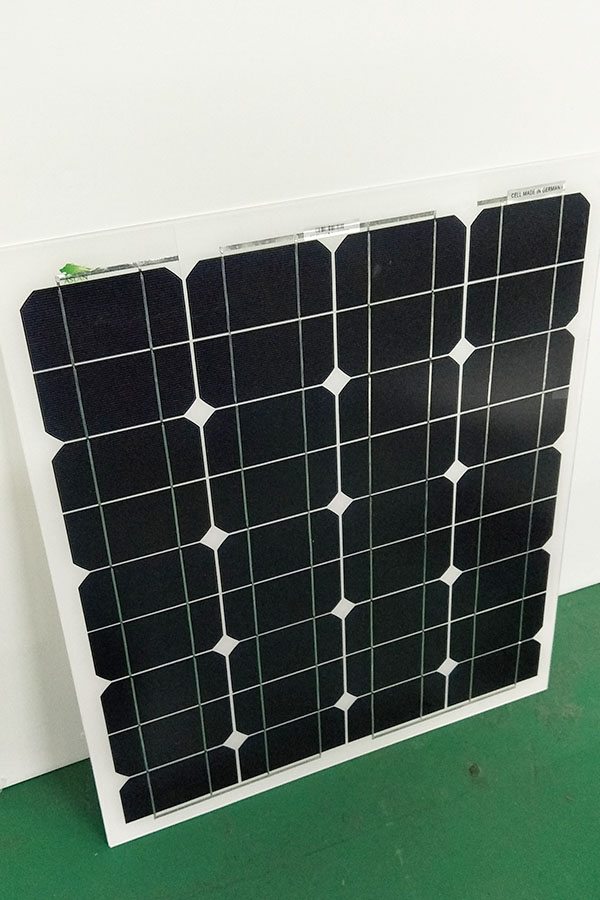8 Years manufacturer Poly-crystalline Solar Panel 5W for Auckland Factories
Short Description:
With a complete scientific quality management system, good quality and good faith, we win good reputation and occupied this field for 8 Years manufacturer Poly-crystalline Solar Panel 5W for Auckland Factories, We warmly welcome all interested customers to contact us for more information.
Poly-crystalline Solar Panel 5W
Technical parameter
Maximum Power(W) 5W
Optimum Power Voltage(Vmp) 9V
Optimum Operating Current(Imp) 0.56A
Open Circuit Voltage(Voc) 10.8V
Short Circuit Current(Isc) 0.62A
Mechanical Characteristics
Cell Type Polycrystalline
No of Cell 18 (3x6pcs)
Dimensions 175x270x18mm
Weight 0.65KGS
Front Glass 3.2mm,High Transmission, Low Iron,Tempered Glass
Temperature and Coefficients
Operating Temperature(°C): -40°C ~ + 85°C
Maximum System Voltage: 600V(UL)/1000V(IEC) DC
Maximum Rated Current Series: 10A
Temperature Coefficients of Pmax: -0.435%
Temperature Coefficients of Voc: -0.35%
Temperature Coefficients of Isc: 0.043%
Nominal Operationg Cell Temperature (NOCT): 47+/-2°C
Materials of solar panel
1).Solar Cell——Polycrystalline solar cell 156*156mm
2).Front Glass——-3.2mm, high transmission, low iron, tempered glass
3).EVA——-excellent anti-aging EVA
4).TPT——-TPT hot seal made of flame resistance
5).Frame——anodized aluminum profile
6).Junction Box——-IP65 rated, high quality, with diode protection
Superiority: high quality anodized aluminum frame, high efficiency long life, easy installation, strong wind resistance, strong hail resistance.
Features
1. High cell efficiency with quality silicon materials for long term output stability
2. Strictly quality control ensure the stability and reliability, totally 23 QC procedures
3. High transmittance low iron tempered glass with enhanced stiffness and impact resistance
4. Both Poly-crystalline and Mono-crystalline
5. Excellent performance in harsh weather
6. Outstanding electrical performance under high temperature and low irradiance
Quality assurance testing
Thermal cycling test
Thermal shock test
Thermal/Freezing and high humidity cycling test
Electrical isolation test
Hail impact test
Mechanical, wind and twist loading test
Salt mist test
Light and water-exposure test
Moist carbon dioxide/sulphur dioxide
for best price
http://www.amazon.com/dp/B01N5L2GM9/tag?=Allabolatnew-20
Renogy 100 Watt 12 Volt Monocrystalline Solar Starter Kit with 30A PWM Controller – LCD Display
High solar cell efficiency : Monocrystalline 18.4%, Polycrystalline 17.9%.
IP65 rated junction box provides complete protection against environmental particles and low pressure water jets.
Bypass diodes minimize power drop caused by shade and ensure excellent performance in low-light environments.
Corrosion-resistant aluminum frame for extended outdoor use, allowing the panels to last for decades
With the 30A PWM Charge Controller, you can expand your system up to a maximum of 400W.
Description
The Renogy 100W Solar Power Starter Kit is perfect for new customers wanting to get a start in solar. The Starter Kit is great for off-grid applications, such as RVs, trailers, boats, sheds, and cabins — providing many benefits, including, but not limited to, quiet power production and grid independence. Adding a polycrystalline or monocrystalline solar panel kit can extend your travels further then ever before.
Specifications
Renogy 100W Monocrystalline Solar Panel
Maximum Power: 100W
Optimum Operating Voltage (Vmp): 18.9V
Optimum Operating Current (Imp): 5.29A
30 Amp PWM Solar Charge Controller with LCD Display (Positive Grounded)
Rated Current: 30A
System Voltage: Automatic Recognition of 12V/24V
Overvoltage Protection: 16.0V
Charging Recovery Voltage: 13.2V
Renogy 20Ft 10AWG MC4 Adaptor Kit
Rating Voltage: 600/1000V
Renogy 8ft 8AWG Tray Cables
Rating Voltage: 600/1000V
Mounting Z Brackets
Four Z Shape Solar Panel Brackets
Eight Long Cap Bolts and Four Short Bolts
Four Spring Washers and Four Washers
Four Nuts
http://youtu.be/HxzdCA0PxRY
I’m not an engineer, and maybe not even very bright -but I figured this out and after much study about off-grid solar, and reading all the forum posts that start with “Well what you want to run determines your system” -I came to the realization that money is what determined the size of my system -and I set out to build the best I could afford over time -and it turns out to be good enough to run various things, including our household lighting, ceiling fan and chest freezer/ refrigerator conversion quite well -which was the goal. It is my intent to add at least one more solar panel array of 1,000 watts or so on a second charge controller, and my system is good enough to allow for that expansion as well -and I may add another after that.
Also: I did not cover “System Grounding” in this video, as there are many opinions on that subject, and the NEC has one all their own. Suffice it to say that I am in the group that goes with; System has its own ground rod, all components are chassis grounded using appropriate fasteners to that rod -and a cable equal to the size of the largest cable used in the system is connected from Negative Battery terminal to ground rod.
Also be aware of the need for lightning protection for rooftop installations.
That said, here’s a brief description of off grid solar function, according to me.
For people unfamiliar with off-grid solar, I find it is easiest to understand if you think of it as three basic components of a “battery system”:
1) The batteries, which store the DC (Direct Current) electricity that you will be using. The size (in Amp Hours) of the battery bank determines how much DC current you can store, and thus how many hours you will run without charging the batteries. The batteries MUST be heavy deep-cycle type batteries, to get good performance, and for the sake of longevity of the battery -they should not be taken below 50% to 60% of their total capacity at any time.
2) The “use side” of the battery system: DC power can be used directly from the batteries for many things, such as lighting, and there are DC appliances available, but they are typically small and electrically inefficient, although very good ones are also available -at staggering prices. An “Inverter” can also be wired to the battery to “invert” DC electricity into AC (Alternating Current) electricity, which is what powers homes as we know them, and typical household appliances can then be powered by the inverter. The inverter must be a quality piece of equipment to get satisfactory performance -the cute little things from the auto parts store are not suitable for serious use, as they typically cannot start electric motors as are present in most appliances. Buy well to avoid disappointment. Just because an inverter has a high wattage on the label doesn’t necessarily mean it will start an appliance motor. A suitable inverter alone can cost between $1,000 and $3,000 new, at retail prices.
3) The charging side of the battery system: We know that PV (photovoltaic) panels, AKA “Solar Panels” produce electricity when exposed to sunlight -which is awesome. To use this electricity to charge batteries, it needs to go through a piece of equipment known as a “charge controller.” A charge controller can be thought of as a typical battery charger that rather than plugging into a wall outlet in your home to power it -is plugged into a solar panel to provide the current for charging your batteries. The type, size and quantity of the panels needs to be appropriately chosen to sufficiently charge the size type and quantity of batteries being used as the base of the system -and an appropriate type and size charge controller in place to complete a solar charging circuit. The charge controller itself will generally limit the size of the solar panel array, but more than one array can be added to a solar system by adding more charge controllers, and thus adding additional charging circuits to the battery system until adequate charging for the battery bank is achieved. In a system that has a slightly inadequate array, or when more amps are used from the battery bank than the solar array can replace quickly enough -additional charging can be added to the system by using a standard battery charger of a type and size suitable to the battery bank being charged -and being powered by a typical generator.
